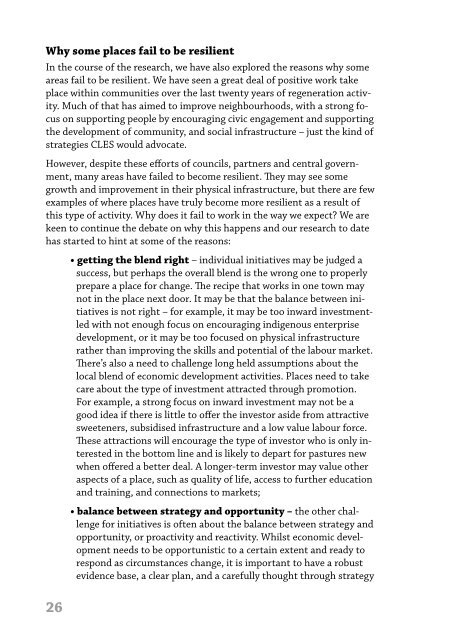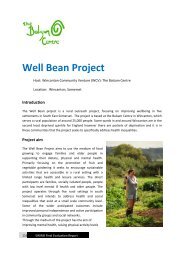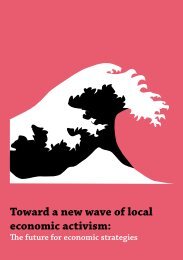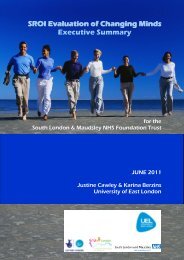Productive local economies: creating resilient places CLES
Productive local economies: creating resilient places CLES
Productive local economies: creating resilient places CLES
Create successful ePaper yourself
Turn your PDF publications into a flip-book with our unique Google optimized e-Paper software.
Why some <strong>places</strong> fail to be <strong>resilient</strong><br />
In the course of the research, we have also explored the reasons why some<br />
areas fail to be <strong>resilient</strong>. We have seen a great deal of positive work take<br />
place within communities over the last twenty years of regeneration activity.<br />
Much of that has aimed to improve neighbourhoods, with a strong focus<br />
on supporting people by encouraging civic engagement and supporting<br />
the development of community, and social infrastructure – just the kind of<br />
strategies <strong>CLES</strong> would advocate.<br />
However, despite these efforts of councils, partners and central government,<br />
many areas have failed to become <strong>resilient</strong>. They may see some<br />
growth and improvement in their physical infrastructure, but there are few<br />
examples of where <strong>places</strong> have truly become more <strong>resilient</strong> as a result of<br />
this type of activity. Why does it fail to work in the way we expect? We are<br />
keen to continue the debate on why this happens and our research to date<br />
has started to hint at some of the reasons:<br />
26<br />
• getting the blend right – individual initiatives may be judged a<br />
success, but perhaps the overall blend is the wrong one to properly<br />
prepare a place for change. The recipe that works in one town may<br />
not in the place next door. It may be that the balance between initiatives<br />
is not right – for example, it may be too inward investmentled<br />
with not enough focus on encouraging indigenous enterprise<br />
development, or it may be too focused on physical infrastructure<br />
rather than improving the skills and potential of the labour market.<br />
There’s also a need to challenge long held assumptions about the<br />
<strong>local</strong> blend of economic development activities. Places need to take<br />
care about the type of investment attracted through promotion.<br />
For example, a strong focus on inward investment may not be a<br />
good idea if there is little to offer the investor aside from attractive<br />
sweeteners, subsidised infrastructure and a low value labour force.<br />
These attractions will encourage the type of investor who is only interested<br />
in the bottom line and is likely to depart for pastures new<br />
when offered a better deal. A longer-term investor may value other<br />
aspects of a place, such as quality of life, access to further education<br />
and training, and connections to markets;<br />
• balance between strategy and opportunity – the other challenge<br />
for initiatives is often about the balance between strategy and<br />
opportunity, or proactivity and reactivity. Whilst economic development<br />
needs to be opportunistic to a certain extent and ready to<br />
respond as circumstances change, it is important to have a robust<br />
evidence base, a clear plan, and a carefully thought through strategy









